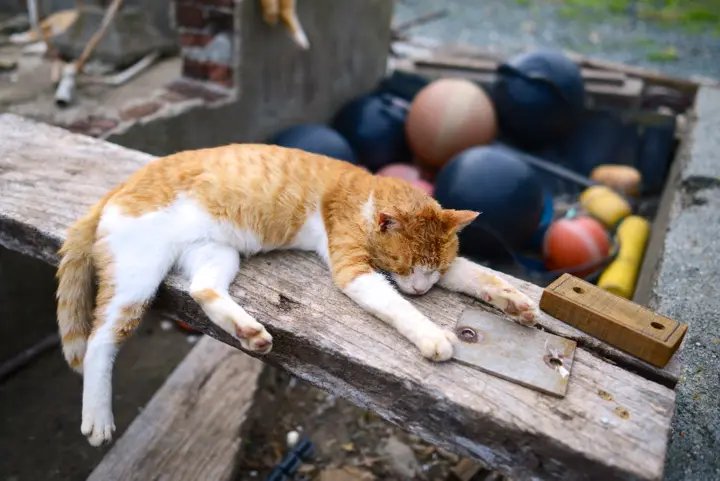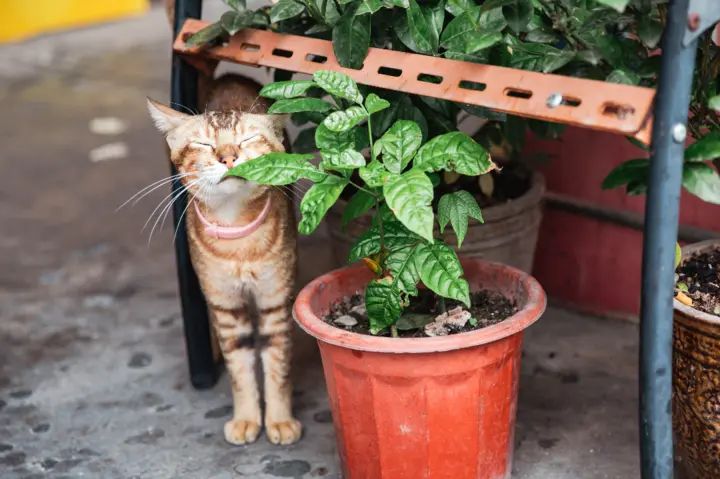Discover Japan's "cat islands" where cats outnumber humans by 8:1
Japan is known for its love of animal-themed attractions, from Tokyo's rabbit cafes to tame deer roaming around Nara to the snow-monkeys of Jigokudane bathing in hot springs.
Show key points
- Japan has several animal-themed attractions, with "Cat Islands" or "Neko-shima" standing out for their unique appeal and high cat-to-human ratios.
- Oshima and Tashirojima are the most famous among Japan’s 11 cat islands, drawing tourists who enjoy interacting with large communities of cats.
- Many of these islands began introducing cats to control rodent populations, especially in areas tied to fishing or silkworm production.
- ADVERTISEMENT
- Over time, the presence of cats grew significantly, and some islands even developed legends or historical reasons for their feline populations, such as the dog-banishing myth of Kadarashima.
- Cats on these islands are typically friendly and coexist peacefully with each other and humans, becoming an endearing attraction for visitors.
- Local tourism initiatives, like Tashirojima’s cat shrine, have helped revive economies in regions affected by natural disasters, using cat tourism as a recovery tool.
- Visiting the Cat Islands not only offers a delightful experience for cat lovers, but also provides financial support to local communities through tourism.
It has also become common to give cats job roles, such as appointing cats as masters of castles or as managers of train stations in order to attract tourists.
But one of the attractions in particular concerns furry animals and surpasses all of the above. It is "cat islands" or "Niko-shima" in Japanese.
Oshima Island, located in Ehime Prefecture, is the most popular cat island. This is despite the presence of many "cat islands" off the coast of Japan and even within inland saltwater lakes.
Tashiro-jima is the second most popular cat island, but nowadays as the concept has become a popular tourist attraction, more islands have become a cat haven.
Recommend
Each of the 11 islands is also known as "Island for Cats" or "Niko-Shima"

Japan has 11 cat islands, or "Niko-shima". These islands are relatively small, housing fewer than 500 people on approximately each island.
However, each of these islands has more cats than humans, and this leads to very large concentrations of adult cats and kittens that roam around them, which are generally gentle, and live very harmonious lives with each other.
It turns out that cats are playful while retaining sobriety when they live in huge groups. She works together when needed, lies in the shade when it's convenient for her, and walks around with people who visit these islands and bring gifts.
The ratio of cats to humans varies from island to island, and as this has evolved into a common factor for attracting tourists, the islands are competing among themselves for as many cats as possible.
On the island of Oshima there is an approximate ratio of 10 cats per person, with a population of only 13 people, while it has more than 150 cats.
In contrast, Tashirojima Island has a population of 100 and has just over 100 cats, making the ratio close to 1:1.
Manabishima Island has the largest human population and cats, with just under 300 people, and is said to have roughly as many cats as humans.
How did all these cats get there?

The cats are native to North Africa, and evolved from the African wild cat, which still exists today. When humans began storing grain, it attracted rodents. Rodents are exceptional carriers of disease, so their presence was not welcome in our human food stores.
Cats chased their rodent prey to our food stores, and found themselves there in front of previously non-existent centers for rats, mice and other small creatures fit to eat as food. Naturally, cats began loitering in our food stores for long periods of time with the aim of catching rodents.
This reduced the spread of disease from mice to humans, so having cats was great for us. Naturally, we domesticated it and brought it with us to all over the world.
The point here is that Japan was not a native home for cats. Humans deliberately raised a large number of cats on these islands and released them to reduce the number of mice. The stories of how all cats got to these islands are unique, varying by island location.
Most of these islands have a story about problems with rodents, but some evolved from myths and legends.
In Oshima there are a lot of cats because it was a common fishing area in the early twentieth century, and fishermen at that time frequently faced problems caused by the presence of mice on their boats, so they often resorted to cats as a solution to these problems.
Over time, cats ventured into the islands, which later led to their numbers increasing to where they are now.
Tashirojima, on the other hand, has a different story behind the existence of its cats.
The island was used to breed silkworms, and this naturally attracted mice, so cats were introduced to help reduce the number of mice.
Although there is no specific reason for the excessive number of cats on Jinakishima Island, it was once the largest cat island. But this island was hit by a severe earthquake in 2005, which destroyed most of the island. The good thing is that the number of cats in them has been on the rise since then.
On Kadarashima Island, legends say that a dog disobeyed its master, so Yasakajinja Shrine (located on the island) poured its anger on all the dogs, leading to the expulsion of these animals from the island.
To this day, no dog species lives on the island, so it's a paradise for cats.
How the Cat Carrots help Japan revive tourism

Cat Islands attract tourists all year round, and some islanders and tourism departments are working to develop them as attractions for these tourists.
With this in mind, Tashirojima Island has built a cat shrine, in honor of the island's cats for their service and useful work. This shrine has now become a popular tourist site.
Since Japan is always negatively affected by bad weather and earthquakes, cat tourism has become a way to bring tourists to devastated areas.
By bringing in tourists, the islands are now making money that they use to rebuild some of the affected areas.
So, if you're a cat lover, Japan is the place to visit.
Although the majority of the Cat Islands were not originally created as designated tourist attractions, they are increasingly gaining popularity as a place worth visiting.
By visiting one of the Cat Islands, you will have the opportunity to help the community there by supporting tourism, as well as spending time with cats throughout the day.








